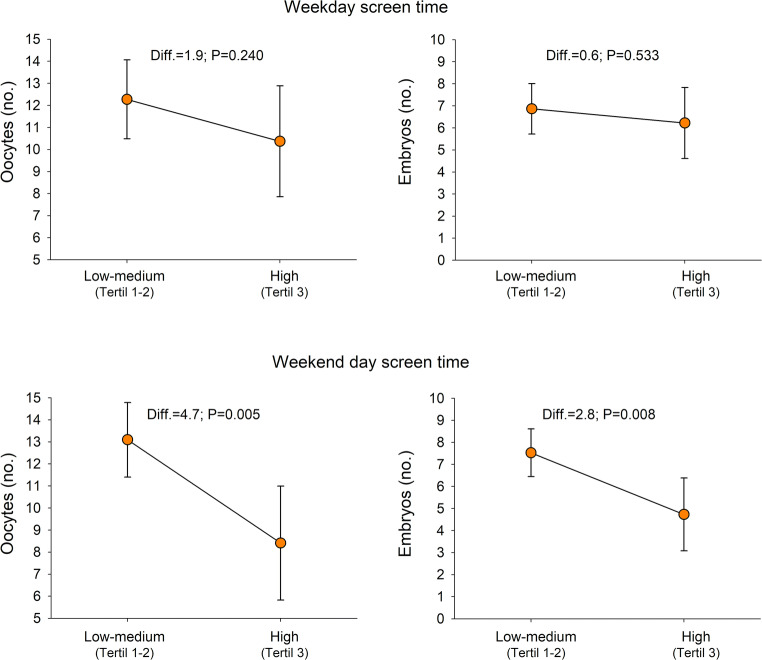Fig. 3.
Differences in the number of oocytes and embryos obtained after controlled ovarian stimulation according to different levels of self-reported screen time in work days and during non-work days (N = 98). Analysis of covariance (ANCOVA) models with oocytes or embryos as dependent variables (in separate models), groups of screen time as fixed factors, and a set of potential confounders as covariates: age, body mass index, educational level (university vs. below university), smoking (never, before but not now and currently), infertility diagnosis (see Table 1 for coding), infertility duration (years), and follicle stimulation hormone administered. High screen time was defined as belonging to the 3rd tertile, while low-middle screen time was defined as belonging to 1st or 2nd tertiles. High screen time in the non-work days (i.e. 3rd tertile) was equivalent to watch screens (TV, DVD, computers) for 7 h or more during the non-work days, i.e. about 3–4 h per day. When high screen time was defined using the 4th quartile instead of 3rd tertile, the results were consistent

